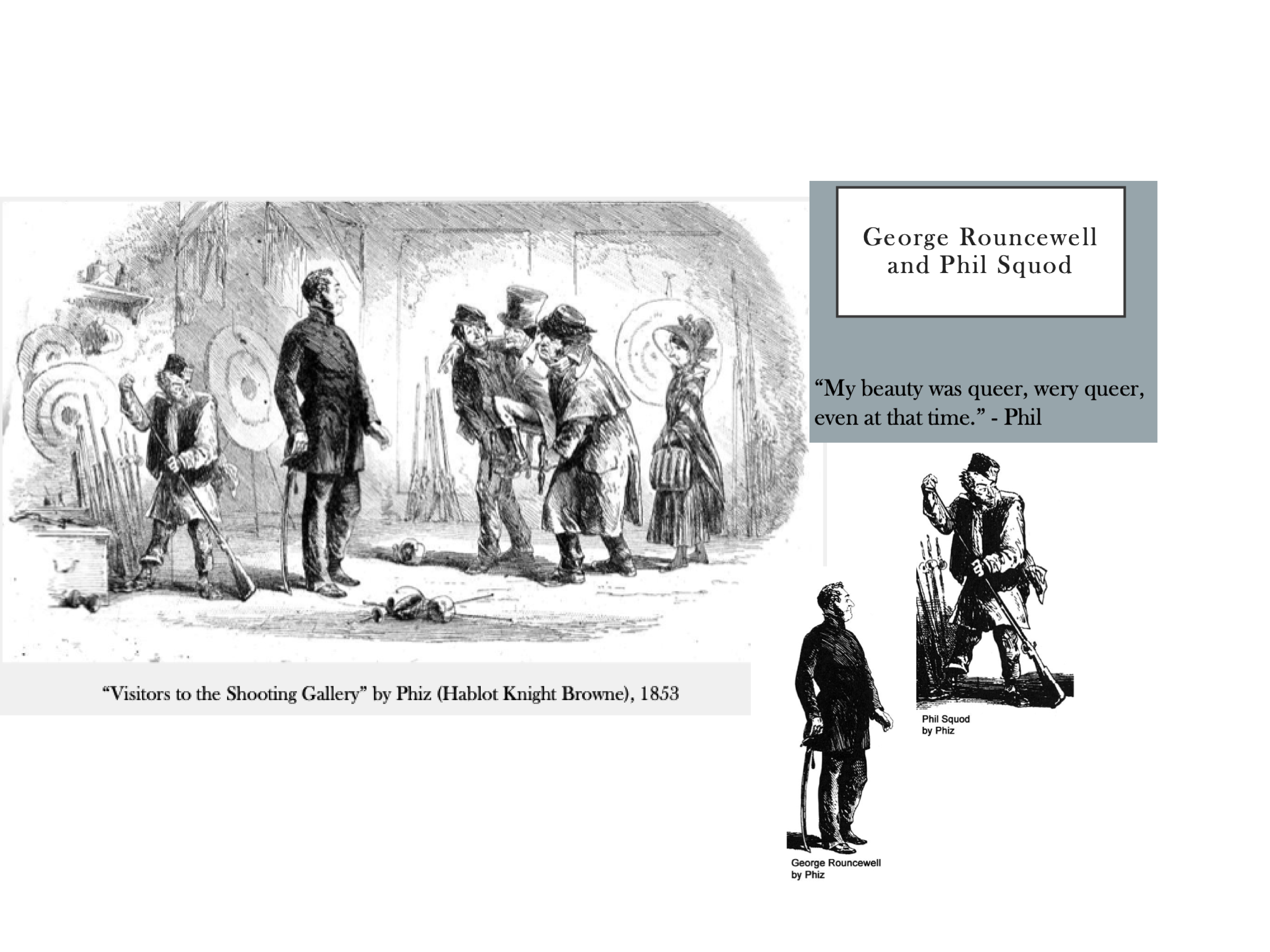Character, Care, and Community: Reading Phil Squod’s Mark in Bleak House

Charles Dickens’s Bleak House (1853) has a minor character named Phil Squod, a man who has been blown up, battered, scorched, and disfigured. Phil shuffles along the wall, leaving a characteristic smear called “Phil’s Mark.” In this talk, I use Phil Squod as an example of the problem of the minor character. Alex Woloch has argued that minor characters are either explosive agitators fighting for attention or colorless functionaries who fade away. But in this talk, I explore a different model. Drawing on the feminist philosophy of ethics of care, I ask: what would it mean to read characters in terms of care? In Phil’s case, care ethics helps us understand his enmeshment with his patron. More generally, the theory reveals how minor characters work communally, building the narrative together. Perhaps “Phil’s Mark” is a sign that we can read – a mark of a body and a character who matters to Bleak House, and whose care for the characters and the narrative invites us to extend care to him in turn.
Talia Schaffer is a Distinguished Professor of English at Queens College CUNY and the Graduate Center CUNY. She is the author of Communities of Care: The Social Ethics of Victorian Fiction (2021); Romance’s Rival: Familiar Marriage in Victorian Fiction (2016), which won the NAVSA prize for the best book of the year; Novel Craft: Victorian Domestic Handicraft and Nineteenth-Century Fiction (2011); and The Forgotten Female Aesthetes; Literary Culture in Late-Victorian England (2001). Her co-edited volumes include The Routledge Companion to Victorian Literature (2020), with Dennis Denisoff; a special issue of Victorian Review, “Extending Families,” with Kelly Hager (2013); and Women and British Aestheticism with Kathy A. Psomiades (1999). She has also edited Literature and Culture at the Fin de Siècle (2006) and Lucas Malet’s 1901 novel, The History of Sir Richard Calmady (2003). Schaffer has published more than 50 articles on topics including Victorian familial and marital norms, disability studies, ethical readings, women writers, material culture, popular fiction, and aestheticism.

